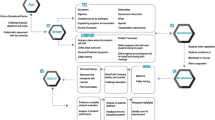Abstract
The world of academic teaching is currently characterized by learning material in the form of books and lecture notes. Constantly renewing learning content, new concepts, and innovations require a new and more flexible knowledge base. Numerous initiatives in the e-learning area approach the issue through renewable digital content. Nevertheless, students in the fast changing VUCA (versatile, uncertain, complex, ambiguous) world demand for innovative approaches that focus on imparting competencies in addition to traditional knowledge. This paper presents the concept and prototype of a new blended-learning approach to foster creativity and innovation: the “Method Cards”. We use the well-known format of traditional playing cards to create learning modules, e.g. representing trends, technologies, or methods. Additional content is linked through integrated NFC tags and QR codes. We additionally present the first results of two user studies conducted amongst Master students as well as in a business environment.
Access this chapter
Tax calculation will be finalised at checkout
Purchases are for personal use only
Similar content being viewed by others
References
Hoffmann, M., Loeffl, J., Luo, X., Thar, W., Valeva, M., Zagel, C.: zukunftsdesign - offen.innovativ.machen. In: Krahl, J., Loeffl, J. (eds.) Zwischen den Welten 11, Cuvillier Verlag Göttingen (2017)
Terziovski, M.: Innovation practice and its performance implications in small and medium enterprises (SMEs) in the manufacturing sector: a resource-based view. Strateg. Manag. J. 31(8), 892–902 (2010)
Hunger, J.: BF/M – 25 Jahre Partner des Mittelstandes. In: Mittelstand im Fokus. Deutscher Universitätsverlag, pp. 13–14 (2004)
IHK für Oberfranken, Bayreuth: Studie 2015. Betriebliches Innovationsmanagement in der Region Oberfranken (2015)
Laugwitz, B., Held, T., Schrepp, M.: Construction and evaluation of a user experience questionnaire. In: Proceedings of the HCI and Usability for Education and Work, pp. 63–76 (2008)
Schrepp, M., Hinderks, A., Thomaschewski, J.: Applying the user experience questionnaire (UEQ) in Different evaluation scenarios. In: Marcus, A. (ed.) Design, User Experience, and Usability. Theories, Methods, and Tools for Designing the User Experience, pp. 383–392. Springer, Switzerland (2014)
Gamification. http://www.gamification.co
Deterding, S., Sicart, M., Nacke, L., O’Hara, K., Dixon, D.: Gamification: using game-design elements in non-game contexts. In: CHI 2011 Extended Abstracts on Human Factors in Computing Systems, pp. 2425–2428. ACM, New York (2011)
Gonzales-Schaller, P.: Trendthema Gamification: Was steckt hinter diesem Begriff? In: Diercks, J., Kupka, K. (eds.) Recrutainment, pp. 33–51. Springer, Wiesbaden (2013)
Hamari, J., Koivisto, J., Sarsa, H.: Does gamification work? – a literature review of empirical studies on gamification. In: Proceedings of the 47th Hawaii International Conference on System Science, pp. 3025–3034 (2014)
Neeli, B.K.: A method to engage employees using gamification in BPO industry. In: Third International Conference on Services in Emerging Markets Services in Emerging Markets (ICSEM), pp. 142–146. IEEE (2012)
Zicherman, G., Cunningham, C.: Gamification by Design: Implementing Game Mechanics in Web and Mobile Apps. O’Reilly, Cambridge (2011)
Lounis, S., Neratzouli, X., Pramatari, K.: Can gamification increase consumer engagement? A qualitative approach on a green case. In: Douligeris, C., Polemi, N., Karantjias, A., Lamersdord, W. (eds.) Collaborative, Trusted and Privacy-Aware E/M-Services, pp. 200–212. Springer, Heidelberg (2013)
Insley, V., Nunan, D.: Gamification and the online retail experience. Int. J. Retail Distrib. Manag. 42, 340–351 (2014)
Niels, A., Zagel, C.: Gamified self-service checkouts: the influence of computer-related causal attributions on user experience and motivation. In: Ahram, T., Karwowski, W. (eds.) Advances in The Human Side of Service Engineering, pp. 24–36. Springer, Heidelberg (2017)
Michael, D.R., Chen, S.L.: Serious Games: Games That Educate, Train, and Inform. Course Technology PTR, Manson (2006)
Korn, O.: Serious game design: Potenziale und Fallstricke bei der spielerischen Kontextualisierung von Lernangeboten. In: Metz, M., Theis, F. (eds.) Digitale Lernwelt – Serious Games: Einsatz in der beruflichen Weiterbildung, Bielefeld, pp. 15–26 (2011)
Zehetmaier, S.: Blended Learning – Eine Lernmethode mit Erfolgsgarantie, p. 2. GRIN Publishing (2007)
Moriz, W.: Blended-Learning: Entwicklung, Gestaltung, Betreuung und Evaluation von E-Learninggestütztem Unterricht, pp. 21–22. Books on Demand (2008)
Liddell, T., van Straefen, J., Tschiggerl, M.: Top Trumps. Raubtiere. Winning Moves Deutschland GmbH, Duesseldorf (2011)
Nintendo: Pokèmon. Schnapp sie dir alle. Nintendo of America: GAMEFREAK (1995)
Altenburger: Rommé Canasta Bridge. Die echten Altenburger Spielkarten. Französisches Clubbild. Spielefabrik Altenburg GmbH
Moses: Pocket Quiz. Politik und Geschichte. Moses. Verlag GmbH, Kempen (2007)
Ravensburger: Supertrumpf. Die Legenden. Ravensburger Spielverlag, Ravensburg (1999)
Diplomero: Der korrekte Einsatz von Farben im Unterricht. https://www.diplomero.com/de/ratgeber/der-korrekte-einsatz-von-farben-im-unterricht.html. Accessed 10 Nov 2017
Eyebizz.de: 180 Millionen Menschen sind farbenblind. Ursachen und Wirkungen der Rot-Grün Schwäche. Ebner Verlag GmbH & Co KG, Ulm (2016)
Lewrick, M., Link, P., Leifer, L.: Das Design Thinking Playbook: Mit traditionellen, aktuellen und zukünftigen Erfolgsfaktoren. Vahlen, pp. 35–36 (2017)
Author information
Authors and Affiliations
Corresponding author
Editor information
Editors and Affiliations
Rights and permissions
Copyright information
© 2019 Springer International Publishing AG, part of Springer Nature
About this paper
Cite this paper
Zagel, C., Grimm, L., Luo, X. (2019). Method Cards – A New Concept for Teaching in Academia and to Innovate in SMEs. In: Ahram, T. (eds) Advances in Artificial Intelligence, Software and Systems Engineering. AHFE 2018. Advances in Intelligent Systems and Computing, vol 787. Springer, Cham. https://doi.org/10.1007/978-3-319-94229-2_22
Download citation
DOI: https://doi.org/10.1007/978-3-319-94229-2_22
Published:
Publisher Name: Springer, Cham
Print ISBN: 978-3-319-94228-5
Online ISBN: 978-3-319-94229-2
eBook Packages: Intelligent Technologies and RoboticsIntelligent Technologies and Robotics (R0)




